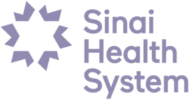Quality & Continuous Improvement
Breakthrough the barrier of mediocrity
Improvement is not this year or next year, depending on the year, but every year.
Our approach to continually seeking out and achieving breakthroughs will help your organization compete stronger and perform better.
- Continuously seek breakthrough improvements by identifying business problems and find the root causes of them.
- Implement and sustain improvements to advance overall performance and reduce costs.
- Emphasis on Leadership Involvement: Juran stressed the critical role of top management commitment in quality efforts, believing senior leaders must be actively involved in setting quality goals and resource allocation.
- Data-Driven Decision Making: He advocated for the use of statistical tools and factual data to analyze quality issues and guide improvements.
- Pareto Principle (80/20 Rule): One of Juran’s well-known concepts is that roughly 80% of problems come from 20% of causes, helping organizations focus efforts where the biggest gains can be made.
Leadership education
While seeking improvements may periodically occupy business leaders, it will never become an effective source of competitive advantage or high performance unless the management is committed, year after year.
A management mandate is vital. It is essential to the success of every improvement project and at every level of the business. We help you build leadership and management commitment to improvement, giving everyone the tools and structures to design and support an ongoing improvement program.
Developing a training curriculum
Continuous improvement is a culture change for any organization. It cannot be achieved simply by decree, but through inculcating methods and tools and employing them.
Individual improvement projects can be a reliable source of ongoing performance gains. But delivering the gains means having teams of people ready to identify opportunities, able to apply the appropriate tools, and having the ability to see it through. Structured learning through established courses, where students learn in the context of the projects they are engaged with cements their learning, increasing effectiveness.






